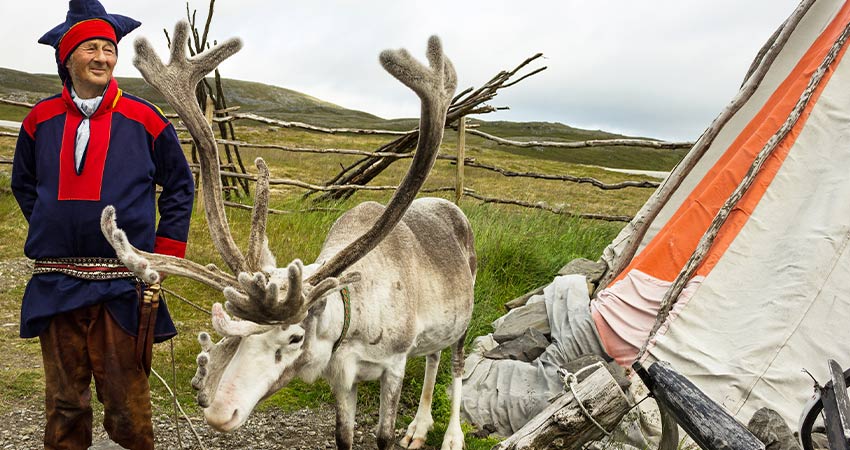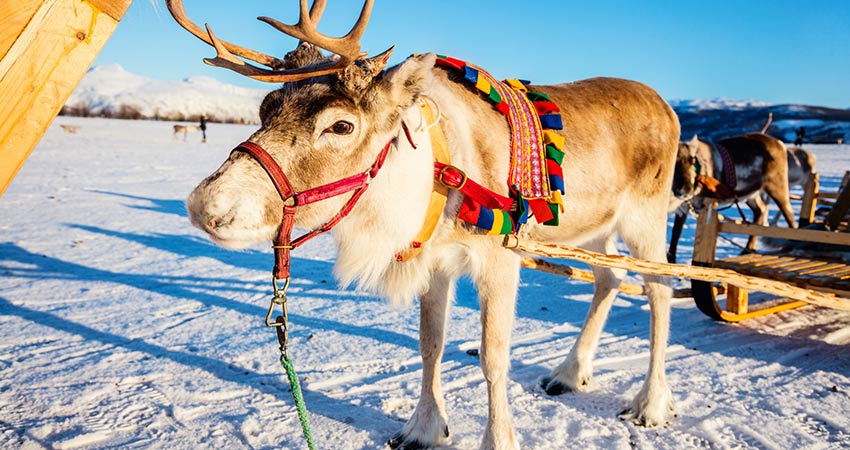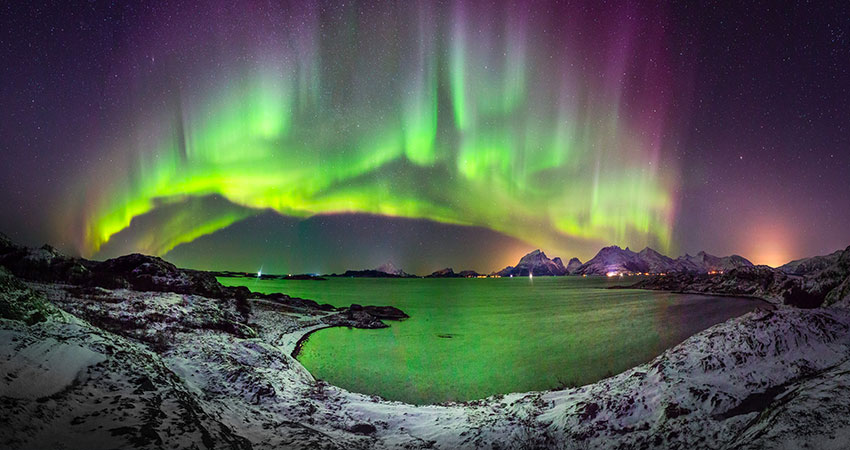Put a trip to Norway’s Sami region on your bucket list when you visit Scandinavia. As with Australia, Norway’s Indigenous population has a vibrant culture, filled with stories, wisdom, and music. They are happy to share it with visitors in order to keep their language and customs alive.
Who Are The Sami?
The Sami culture is the oldest in Scandinavia, and it is experiencing a renaissance. 80,000 Sami live in Norway, Sweden, Finland, and Russia. Half of those are in Northern Norway, and this is where their culture is the strongest. (In southern Norway, they tend to live in Trøndelag and Femundsmarka.) As a matter of fact, in the Norwegian tundra, nine out of ten people are Sami. They live in the Arctic region in an area now called Sapmi.
Where did the Sami Come From?
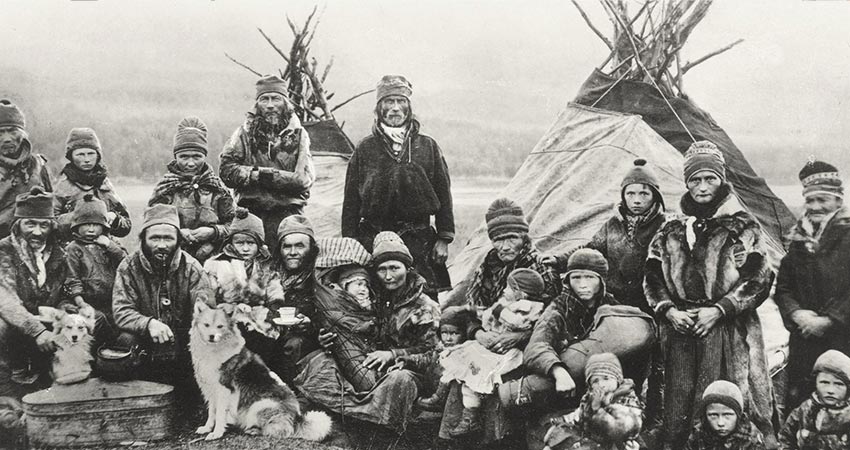
The Sami people have lived in the Arctic Circle for thousands of years. They are recognized as genetically different from other European people, and their origin is a puzzle. The first humans colonized Europe about 45,000 years ago, and the Sami are descendants of nomadic tribes who inhabited northern Scandinavia.
The Sami aren’t related to Indigenous Alaskan people, and they often have very light skin, blue eyes, and fair hair. When the Finns came to Finland, in approximately 100 AD, the Sami settlements were spread throughout Northern Scandinavia. Amazingly, the Sami have not only survived in this world where the winter temperatures can get to -22 degrees Fahrenheit, they have thrived.
What is Unique About Sami Culture?
It’s difficult to imagine the Sami without reindeer. They are, and have been, an invaluable resource. They have been used for herding, for trade in place of money, for clothing, shelter, and food. Most people in this region speak Sami as their first language. The area is bilingual, and their traditional lifestyle is still alive.
Sami art is called “duodji.” It is a mystical process central to every aspect of life, culture, change, the land, and spirituality. It is considered to be a living representation of their traditional society, always living in the present across time. The Sami notion of art is generally needlework, carpentry, handcrafts, and some paintings. Because the people mostly make their living with agriculture and reindeer herding, the raw materials for Sami art includes hides, horns, bones, natural dyes, and occasional cloth. They have also perfected using pewter thread.
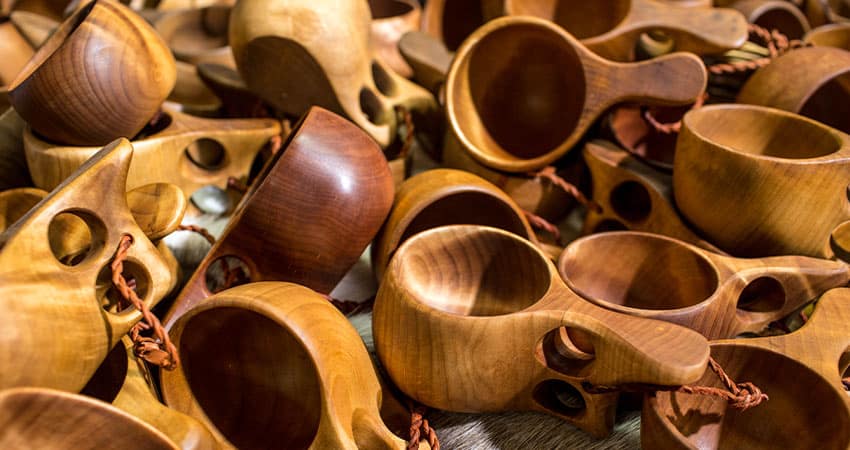
The Sami are sometimes at odds with the modern Norwegian culture, as it moves into their territory. This has been the basis of new Sami art forms that includes satire as seen on stages, sculptures, poetry, music, and paintings.
“Yoik” is the native Sami music, sharing features with other Indigenous music. Yoik is part melody and part rhythm. Words and gestures and facial expressions can also be part of a song. The Sami use yoik to communicate with other people, animals, and nature. Every person has an individual sound, or yoik, given to them as a child. This is part of their identity, following them through their lifetime, without change. It is connected to kinship and to their place in the community. One member of a tribe can sing a person’s yoik, after their death, to bring their memory back to life.
The yoik is one of Europe’s oldest song traditions. Today, young artists are combining these mystic ancient sounds in new genres. This music is not only gaining acceptance, it is experiencing international acclaim.
Says one artist, “The yoik is like swirls in the Northern Lights and wind on the mountain plateaus. I feel other-worldly when I yoik.” Another well-known artist, Elle Maria Eira, yoiked before she could talk, and she tells stories about her life as a reindeer herder through her music. “Yoik is in my blood. I have practiced it in all situations and phases of life. I feel that my ancestors are with me when I’m yoiking.”
This music is a beautiful way to connect with nature, ancestors, and primal forces.
What Sami Activities and Culture are Available for Tourists?
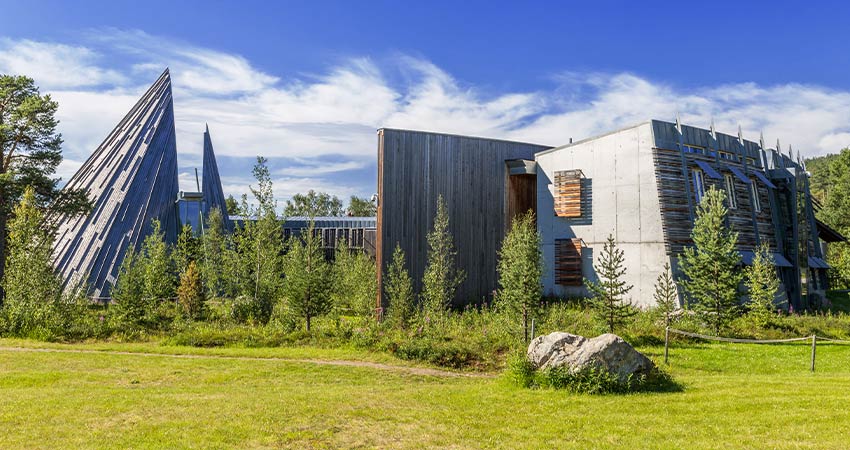
The Norwegian Sami are happy to share their amazing culture with you, and Karasjok is the Sami capital. There are approximately 3,000 residents and 60,000 reindeer! There are Sami institutions and living cultural experiences available. Head to the Sapmi Culture Park and try Sami cuisine by an open fire, hear yoiking first hand, and be bowled over by Sami dress and costumes. The town is also home to the Sami Parliament, housed in a traditional lavvu, or tent, that somewhat resembles a Native American Plains Indian teepee. You can also be out and about in the wilds during the day, and spend your evening eating dinner at a reindeer herder’s tent, listening to stories beneath a starry sky.
When visiting Norway’s Sami country, you can join a dogsled expedition or learn to throw a lasso. This land is loaded with ponds and lakes; consider fishing and wildlife viewing. Go skiing, camp in a traditional Sami tent, discover reindeer husbandry, and, during the winter, be in awe as the Northern Lights paint the sky with neon colors.
When you dream of your ideal Scandinavian vacation, put an experience with Norway’s Sami culture on your bucket list. It may end up being one of the most memorable parts of your trip!
Let your Destination Expert know that you’re fascinated by the present in Scandinavia, and that you’d also like to dive deep into its ancient culture.


